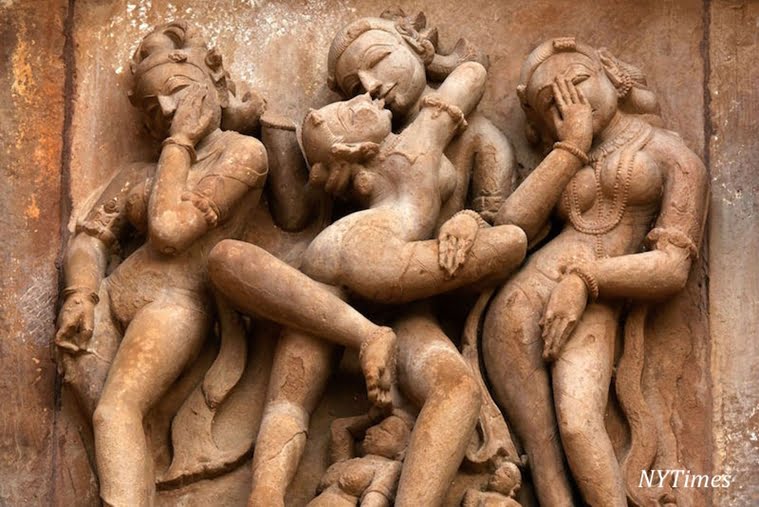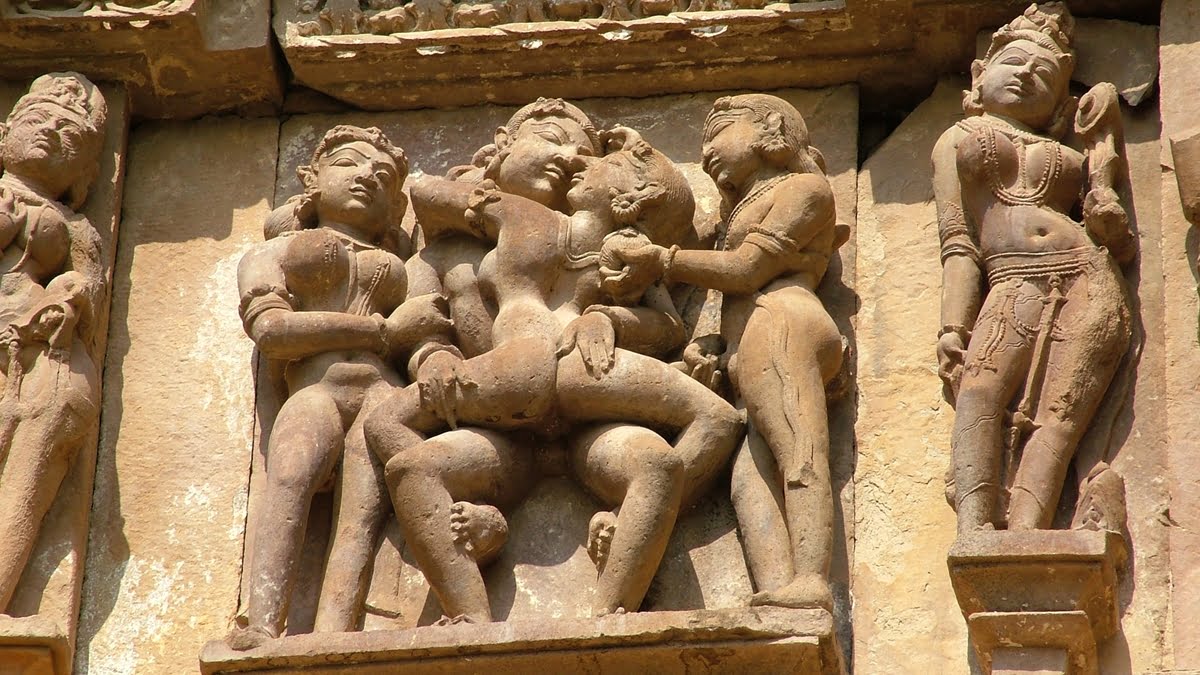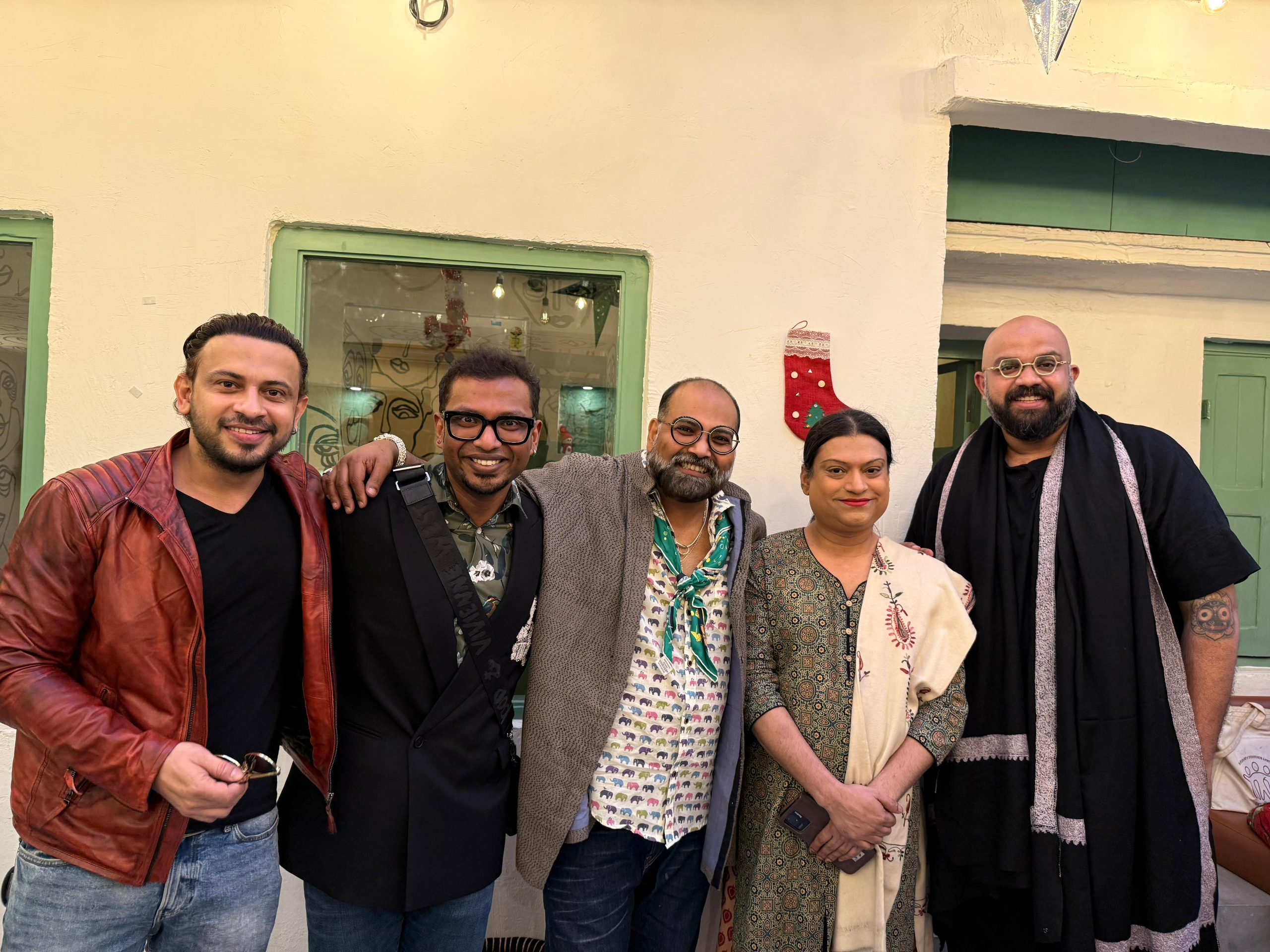Kamasutra, instead of being seen as a sexual code of conduct, gets its present reputation from Richard Francis Burton’s translation of it, who while looking at the text through his Orientalist glasses deemed the Kamasutra, as a text about love, for the first time in history in 1883. He used the Kamasutra to showcase the contrast between the sensibilities of Victorian England and the ‘Orient’, furthering the cultural stereotyping of the ‘Orient’ through his work. Traditionally ascribed to Mallinaga Vatsyayana, the Kamasutra probably compiled between the 2nd and 4th century AD, is a composite work often comparatively analaysed with the Manusmriti and the Arthashastra.
All these texts are prescribed codes of conduct for the Purusartha philosophy in Hinduism, which describes dharma (ethics), artha (economics), kama (desire) and moksha (salvation) as the four prime goals in the life of a human being. However, the Bhagavad Gita refers to only two of these goals— Dharma and Moksha, and speaks of desire only very briefly, and in the context of posing an obstacle to spiritual salvation.
balaṁ balavatāṁ chāhaṁ kāma-rāga-vivarjitam
dharmāviruddho bhūteṣhu kāmo ’smi bharatarṣhabha— Bhagavad Gita. 7.11
Bhagavad Gita says the following thing about the pursuance of kama: ‘The strong man’s strength should be applied to protect the weak, not for personal aggression. Similarly, sexual activity according to religious principles (dharma) should be for the propagation of children, not otherwise.’
The subject of desire, is not just discussed in the Kamasutra but is regulated as the Kamasutra acts as a prescriptive text, being a work of upper-caste elite men, well-versed in Sanskritic knowledge. The text is divided into seven sections, but the section that has attracted the most attention— Samprayogika, deals with physical positions.
The subject of desire, is not just discussed in the Kamasutra but is regulated as the Kamasutra acts as a prescriptive text, being a work of upper-caste elite men, well-versed in Sanskritic knowledge. The text is divided into seven sections, but the section that has attracted the most attention— Samprayogika, deals with physical positions.
According to Madhavi Menon, there seems to be no connection between the asanas described in Patanjali’s 4th century CE Yoga Sutra, (both texts approximately belong to the same time period) and the positions described in the second chapter of the Kamasutra, but whether Kama and Yoga are cousins and have coexisted in the Indian subcontinent, with Patanjali’s Yoga triumphing and developing into what we associate with mainstream Yoga today, is an exhausting and on-going debate.
Also read: In India Where Kamasutra was born, The History Of Colonised Bodies And Sexual Repression
Kama, the god of desire, born of the creator Brahma was once deputed to induce desire in Shiva, so that an offspring of Shiva and Parvati may be born, who could defeat Tarakasura. Shiva, angered by Kama’s efforts at trying to wake him up from his yogic meditation, opened his third eye only to engulf Kama’s entire body in flames, and while Kama was spared and allowed to live; he was only allowed to live without a body. Thus, making him the bodiless god of desire. The history of desire in the subcontinent, has been long, and rather inconsistent, which sometimes amused & sometimes confused the Victorian sensibilities of the colonialist scholars.

The Kamasutra is directed towards the nagaraka (citizen), who is equated with the nayaka (actor). The nayaka is male and his descriptions make him seem like the ‘embodiment of absolute masculinity’. While the traits of the nayaka seem to be fixed, the variety of women, who seem to be accessible to the nayaka, are many, as there seem to be hardly any constraints on a male’s accessibility to a certain female, unless the male belongs to a low-caste and the woman is of a higher-caste in which case their union would be a direct challenge to the social order. Thus, the text concludes that the access of a male to the variety of women, depends on the social class of a man. The nayika is only described in respect to the nayaka and eunuchs, for example though could identify, as Male or Female, but in relation to the nayaka’s masculinity, they’d only be seen as ‘lesser males’ and would be described as ‘feminine’.
Like any other prescriptive text, the Kamasutra is not a realistic expression of the real-time practices of the masses but interestingly, the text recommends that its knowledge be taken to women, who could acquire knowledge of it through either their husbands or other married women, kinswomen etc. In this case, the Kamasutra must be located in the power dynamics of patriarchy.
Wendy Doniger, in her book ‘Beyond Dharma: Dissent in the Ancient Indian Sciences of Sex and Politics’ observes that Vatsyasana ignored social dharma at large, and believed that the pleasures of kama should be partaken wherever one could, but within reason. Yet, he is seen invoking how the social life is marked by the stability of the system of four classes. This, Doniger notes, indicates how he wanted to please and seek the support of the religious critics for his work.
There are only a few references to caste and all of these are enlisted and not discussed or debated. One of which is when Vatsyasana says: “Kama enjoyed according to the texts, with a woman who is of the man’s own class, and who has not been with another man before, is a means of getting sons, a good reputation, and social accep- tance. But . . .” (1.5.1). This is followed by a rather long list of all other ‘types’ of women that a man, who is not particularly concerned about caste and class associations and social acceptance, could enjoy sex with. These are among the instances that shows how caste-based hierarchy was still prevalent in the Kamasutra.
However, while the Kamasutra tries to legitimise and establish the hegemony of one form of desire, i.e. heterosexual relations between upper-class men and all women, we see an acknowledgment of non-conforming relationships. Yet, when describing a lesbian relationship in the Kamasutra, one of the women is classified as purusavat, literally man-like. Lesbian relationships are recognised within the Kamasutra but there is a continuous attempt to posit these relationships within the heteronormative ideals of a patriarchal society.
Madhavi Menon is of the opinion that, while in the Indian subcontinent desires are multiple, names and labels for them are scant. Although the sexual code of conduct does try to reconcile all kinds of sexual interactions within gender-coded norms, the Kamasutra also doesn’t lay out any rewards for conforming to these norms or punishments for violating them either. This is why, even Vatsyayana is forced to concede that ‘passion knows no order’, because the text even in the attempt to codify sexual conduct, regularly contradicts itself by pointing to the exceptions, making the text defy its own classifications.
Violence has been incorporated in the Kamasutra, as sexual activity that has been described as Kalaharupam Suratam— or sexual combat. The text tries to regulate violence in sexual relationships by assigning a fixed role to the nayaka and the nayika. Beating has been included as a legitimate part of the act, on the part of men but while men were permitted to indulge in the expression of violence, which has been seen as intrinsic to masculine sexuality, women’s anger has only been given limited outlets.
Also read: What Are The Taboos Concerning Female Sexuality?
The woman engaged in the act, is expected to plead, while being permitted to shout, scream and even kick the nayaka but her protests aren’t seen as genuine expressions of pain; but as only as a fulfillment of her role in the sexual activity. Unfortunately, it is to this we are compelled to locate the problem in our culture, which does not attach important to a woman’s words. From here, we could also trace the lacunae in the Indian laws when it comes to criminalising marital rape as well. In Kamasutra, there is no mention of a woman’s consent, there is only sexual subjugation. While the text prescribes that there are limits to a woman’s protestations, it only warns the man, against the use of excessive violence.
In Kamasutra, there is no mention of a woman’s consent, there is only sexual subjugation. While the text prescribes that there are limits to a woman’s protestations, it only warns the man, against the use of excessive violence.
Like it has been mentioned before, the Kamasutra must also be located within the power dynamics of Brahmanical patriarchy. Therefore, it expects a women to play an active part in her own subordination, both inside and outside of bed, by asking her to treat her husband like a god, by looking after the household, cooking according to his tastes, by sleeping only after he sleeps, by waking up before him, performing religious rituals and rites he mayn’t have time for, keeping a distance from mendicants, renouncers of the world, witches, fortune-tellers and ‘unchaste’ women and also by encouraging her husband to remarry if she remains childless. But in a general sense, Kamasutra is not obsessed with procreation and does not prescribe the use of Kama, for its fulfilment. This is highly in contrast with the Bhagavad Gita, a text that also seems to be undergoing compilation, or must have recently finished compilation during the same period.
References
- Menon, M. (2018). Infinite variety: A history of desire in India. New Delhi: Speaking Tiger.
- Prabhupāda, A. C. (2015). Bhagavad-gītā as it is: With the original Sanskrit text, roman transliteration, English equivalents, translation, and elaborate purports. Juhu, Mumbai, India: Bhaktivedanta Book Trust.
- Chakravarti, U. (2013). Conceptualising Brahmanical patriarchy in early India: Gender, caste, class and state. New Delhi: Critical Quest.
- Roy, K. (1996). Unravelling the Kāmasutra1. Indian Journal of Gender Studies, 3(2), 155–170. https://doi.org/10.1177/097152159600300202
Maria Uzma Ansari is a student of History and Culture at Jamia Millia Islamia. She runs her own blog and she can be found on Instagram.
Featured Image Source: TheWire.in





How is Kamasutra related to Caste System? If you are holding Kamasutra as a prescriptive text then you have to give equal credence to everything written in it, which means you have to consider the author’s claim that Sex is a vehicle if properly used can help you reach Mukti/ Liberation where you merge into Cosmic Consciousness / become one with God. This was not limited to Brahmins. It was applicable to everyone. So where is the caste angle in this? Besides, your claim of The Author being an upper class person has been rebutted by True Indology on twitter. If you did not even research the origin of what you are writing under the strong allegation of Caste-based discrimination, then it says everything one needs to know about standard of education in Jamia. Slapping”upper caste Hindu” isn’t an argument if the person you are levelling such allegations against is not an upper caste Hindu.
I have no problem if you point out shortcomings in religions, be it any religion, but it should be well researched and have solid logical arguments.
That’s my problem with M.A English, Political “Science”, Social “science”, History & Culture studies, Gender Studies, Diploma in Mass Communication, Journalism students. If you did not care to put in efforts required to secure seats in proper education stream, and then had to settle for these sorry excuses of “study streams”, then expecting hard work from you is futile. What’s worse, as you people don’t put in hard work in studies during formative years of brain or even later in life because of disconnect with subjects that depend on use of Logic, Reasoning or computation , your prefrontal cortex is under developed and can’t work with complex problems involving heavy use of Logic and reasoning, focus on complex problem for extended periods of time etc.
Then you have to rely on buzzwords to produce such garbage that makes no sense. Just horrible. Govt needs to stop funding Arts stream. The era of this Nonsense is long gone. This is age of science where people willing to work hard consistently are to be rewarded. This included fine arts and other arts tho. But these people should not be allowed to give lectures on socially complex concepts where Logic & Reasoning and careful analysis is a must.
There is still time. Please consider working hard in life and making an actual contribution to society. This will require you to let go of “Arts”
If by research you mean looking stuff up on Twitter, then you have no right to undermine anybody’s intelligence. Go pick up a book for once.
It is really disappointing to see that till now arts subjects are considered inferior. You should look up for “Renaissance” what it meant and hypothesized which is still relevant today. However in Capitalist society , in this age of reason and rationality we forget how to become human and the insatiable desire of getting more has corrupted us.
It is Art which helps an individual to meet his hidden self. I’m not denying science, AI are worthless but consider what they are planning in this stage. They are searching for the alternatives to this planet and they knew what had almost destroyed this plant. The Humanity. We must try to create a society where arts and science both exist because if one is almost at verge of death then other is trying to retrieving it.
Even if you don’t agree with article you don’t have any right to criticize the hard work of a writer. Online platforms for women are the only opportunity to express themselves and the sole purpose of this magazine as I believe is to urge women to present their perspective of society which usually in India is subjugated.